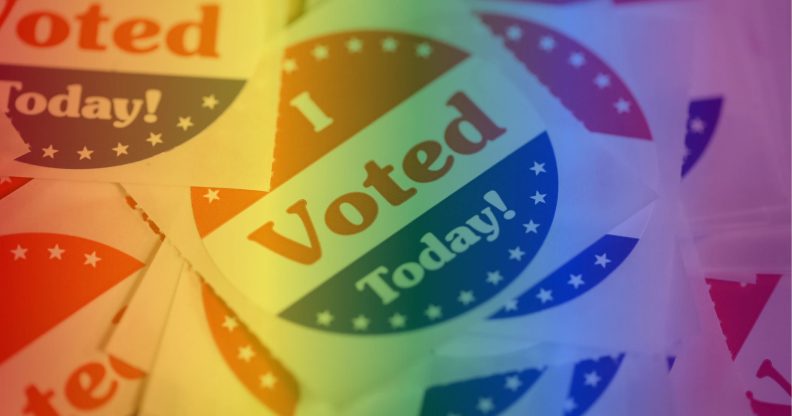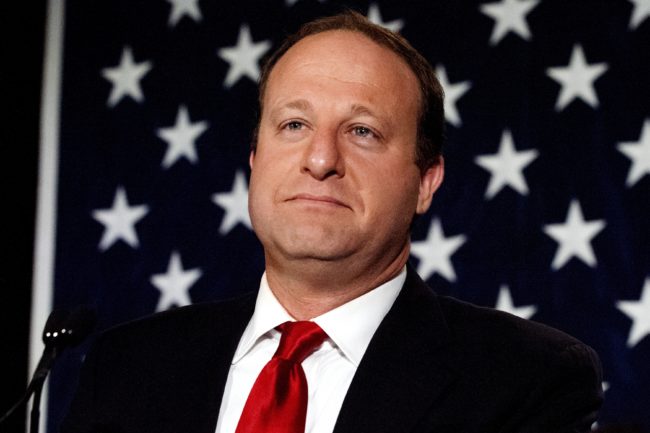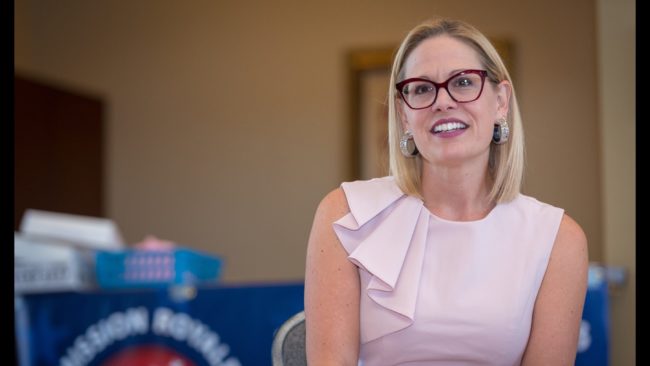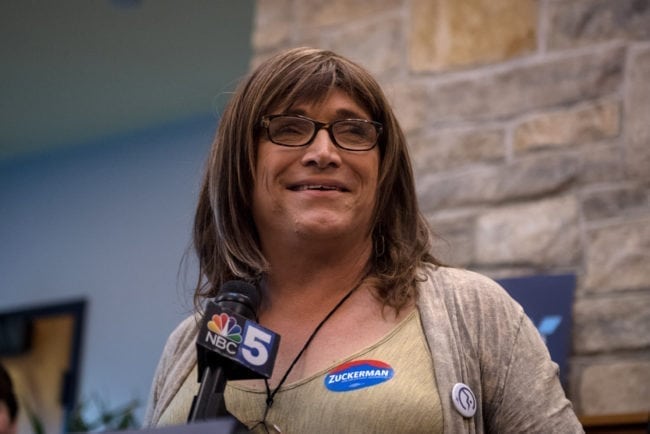What do the US midterm elections mean for LGBT representation?

The US midterm election 2018 have seen some major wins for LGBT+ representation, though the promised Rainbow Wave slowed to a steady trickle.
In the run-up to the vote, LGBT+ activists expressed their hopes that a large swing to the Democrats would usher in a wave of out LGBT+ political figures, who are historically under-represented across US politics.
The November 6 midterms did usher in some small increases for LGBT+ equality, but some painful losses halted a bigger step forward.
The US midterm election 2018 at a glance
The US midterm elections 2018 come exactly halfway between the 2016 presidential election and 2020 presidential election.
All 435 seats in the US House of Representatives were up for election, alongside 33 seats in the US Senate (a third of the total) and 36 state governorships. In many states, the US midterm elections happen alongside elections for local government, ballot measures and state legislatures.
How has LGBT representation increased in the US midterm election?
There were small increases in LGBT+ representation overall in major races.
Before the election, there were six out LGBT+ people in the US House of Representatives, one in the Senate, and one in a governor’s mansion.
“We’ve come a long way as a nation in our march toward LGBTQ equality, and none of our progress would have been possible without the courage of the countless LGBTQ organizers and activists who marched for it.”
Following the election, there are nine LGBT+ people in the US House, one in the Senate, and two in Governor’s mansions.
US midterm election 2018 election result
Voters in Massachusetts saw off an attempt to repeal a transgender rights measure, while Jared Polis became the first openly gay man to be elected a US Governor, with his victory over Republican Walker Stapleton in Colorado by by 51.6 percent to 45 percent.
He becomes the second out LGBT+ governor, joining Governor of Oregon Kate Brown, who was on Tuesday re-elected with 49.9 percent of the vote after coming to power in a special election in 2016.

Jared Polis was elected Governor of Colorado (JASON CONNOLLY/AFP/Getty)
LGBT+ representation in the US House of Representatives will slightly increase, with New York’s Tracy Mitrano, Sharice Davids of Kansas, California’s Katie Hill, New Hampshire’s Chris Pappas and Angie Craig of Minnesota joining re-elected incumbents Mark Pocan, David Cicilline, Mark Takano and Sean Maloney.
Davids is the first LGBT+ representative from Kansas, and the first Native American woman elected to Congress along with Deb Haaland, who was elected in New Mexico’s 1st Congressional District.
The island of Guam, a US territory and a strategically important military base, will be governed for the first time by a woman, Lou Leon Guerrero, whose running mate—now lieutenant governor—Josh Tenorio is openly gay. “First LGBT win of the night,” commented Annise Parker, president of the Victory Fund, in a tweet on Tuesday.
The Arizona Senate race is, at the time of writing, too close to call. Bisexual Democratic party candidate Kyrsten Sinema trailed behind Republican rival Martha McSally by less than one percentage point, while a third-party Green Party candidate picked up 2.2 percent of the vote.

Kyrsten Sinema lost out in Arizona. (Getty)
If Sinema is ultimately defeated, Senator Tammy Baldwin, who won re-election in Wisconsin with 55.4 percent of the vote, will remain the only out LGBT+ politician in the chamber.
Some of the most dramatic scenes of the night came in Texas, where lesbian Iraq veteran Gina Ortiz Jones fell short of making history by the narrowest of margins.
Ortiz Jones fell just short of beating Republican Will Hurd in the race for a House seat, gaining 102,214 votes (48.8 percent) to Hurd’s 102,903 votes (49.1 percent). A third-party libertarian candidate in the race got 4,402 votes (2.1 percent), well above the margin between the two major candidates.
Elsewhere in Texas, lesbian Mexican-American police sheriff Lupe Valdez lost her campaign to become governor, but picked up a formidable 42.5 percent of the vote against incumbent Greg Abbott, who picked up 55.9 percent.
Valdez had hoped to benefit from a surge in support for Democratic Senate candidate Beto O’Rourke, but O’Rourke also lost out to anti-LGBT Republican Ted Cruz by 48.3 percent to 50.9 percent.
Christine Hallquist, the first transgender woman to pick up a major party’s nomination in a gubernatorial election, lost her election to become Governor of Vermont by an expected wide margin.

Vermont Democratic gubernatorial candidate Christine Hallquist (Hillary Swift/Getty)
Hallquist picked up 110,136 votes (40.5 percent), to incumbent Republican Phil Scott’s 150,761 (55.4 percent)
The Republicans Party had no out LGBT+ candidates running in federal or statewide races in the US midterm election 2018.
The US midterm election 2018 more broadly saw Democrats take overall control of the House of Representatives, but Republicans expanded their lead in the Senate, and held onto power in many of the states that Democrats need to win in 2020 to challenge President Donald Trump.
Democratic National Committee chair Tom Perez congratulated Polis and other LGBT+ candidates on the progress made.
Perez said: “We’ve come a long way as a nation in our march toward LGBTQ equality, and none of our progress would have been possible without the courage of the countless LGBTQ organizers and activists who marched for it, refused to back down, and demanded a seat at the table.
“Jared will continue building on that progress and inspiring future leaders to break down barriers in every community.”

